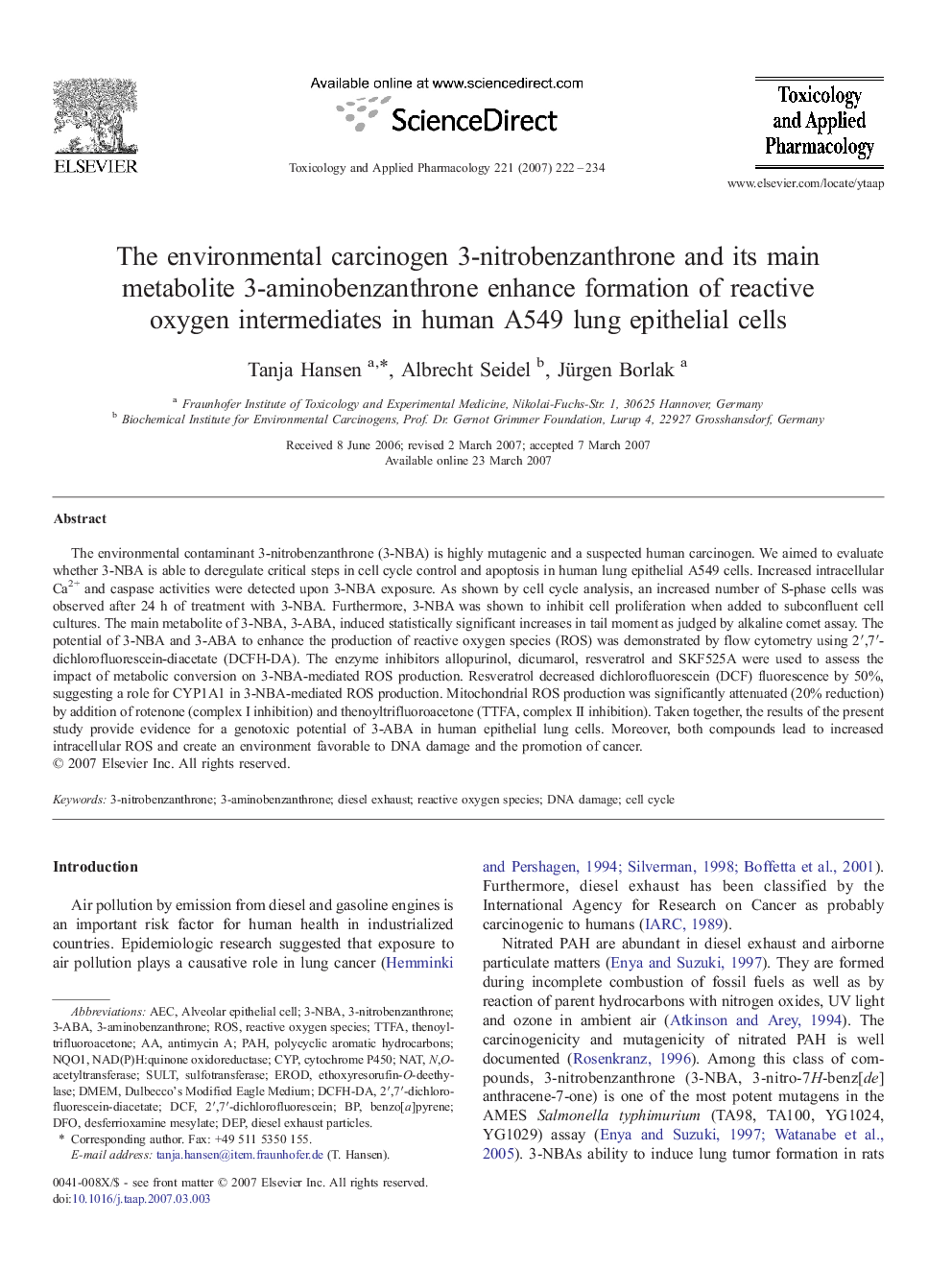| کد مقاله | کد نشریه | سال انتشار | مقاله انگلیسی | نسخه تمام متن |
|---|---|---|---|---|
| 2571404 | 1128631 | 2007 | 13 صفحه PDF | دانلود رایگان |

The environmental contaminant 3-nitrobenzanthrone (3-NBA) is highly mutagenic and a suspected human carcinogen. We aimed to evaluate whether 3-NBA is able to deregulate critical steps in cell cycle control and apoptosis in human lung epithelial A549 cells. Increased intracellular Ca2+ and caspase activities were detected upon 3-NBA exposure. As shown by cell cycle analysis, an increased number of S-phase cells was observed after 24 h of treatment with 3-NBA. Furthermore, 3-NBA was shown to inhibit cell proliferation when added to subconfluent cell cultures. The main metabolite of 3-NBA, 3-ABA, induced statistically significant increases in tail moment as judged by alkaline comet assay. The potential of 3-NBA and 3-ABA to enhance the production of reactive oxygen species (ROS) was demonstrated by flow cytometry using 2′,7′-dichlorofluorescein-diacetate (DCFH-DA). The enzyme inhibitors allopurinol, dicumarol, resveratrol and SKF525A were used to assess the impact of metabolic conversion on 3-NBA-mediated ROS production. Resveratrol decreased dichlorofluorescein (DCF) fluorescence by 50%, suggesting a role for CYP1A1 in 3-NBA-mediated ROS production. Mitochondrial ROS production was significantly attenuated (20% reduction) by addition of rotenone (complex I inhibition) and thenoyltrifluoroacetone (TTFA, complex II inhibition). Taken together, the results of the present study provide evidence for a genotoxic potential of 3-ABA in human epithelial lung cells. Moreover, both compounds lead to increased intracellular ROS and create an environment favorable to DNA damage and the promotion of cancer.
Journal: Toxicology and Applied Pharmacology - Volume 221, Issue 2, 1 June 2007, Pages 222–234